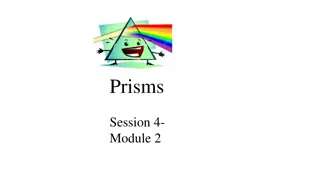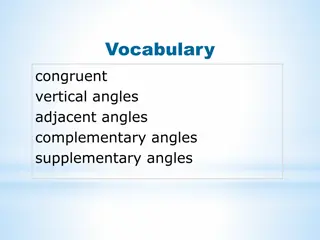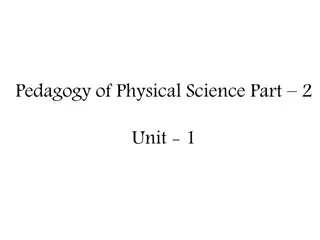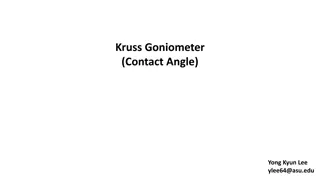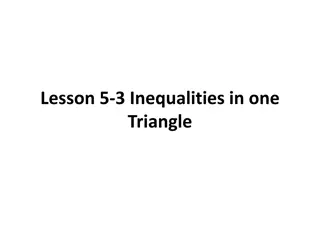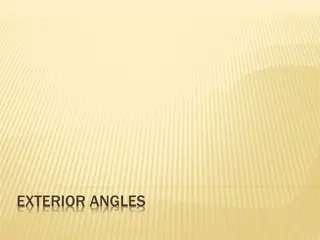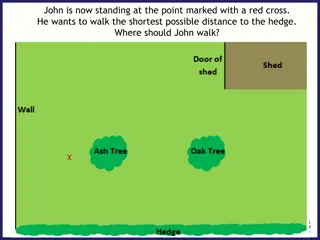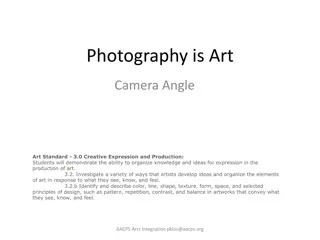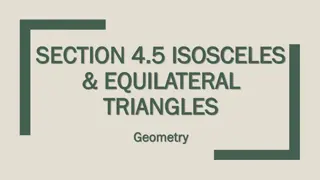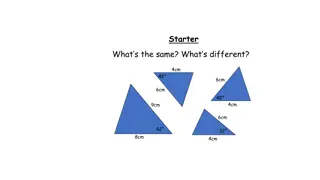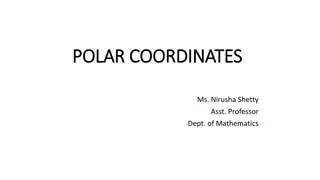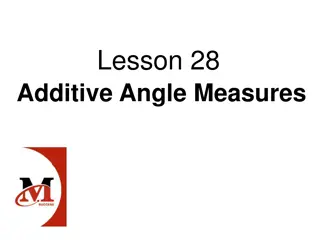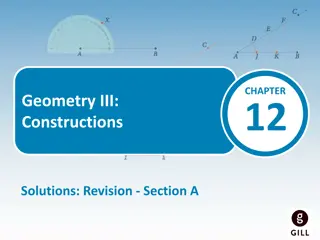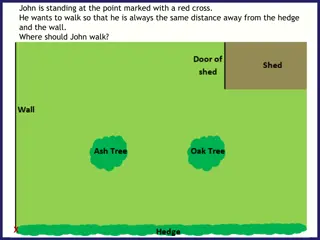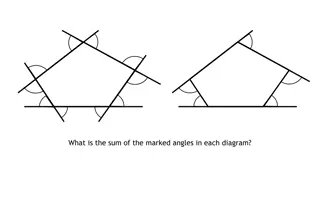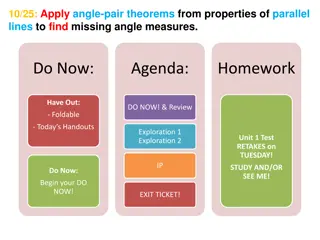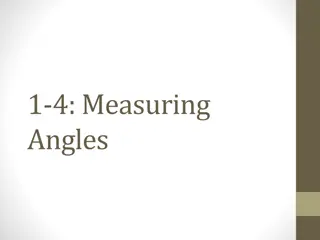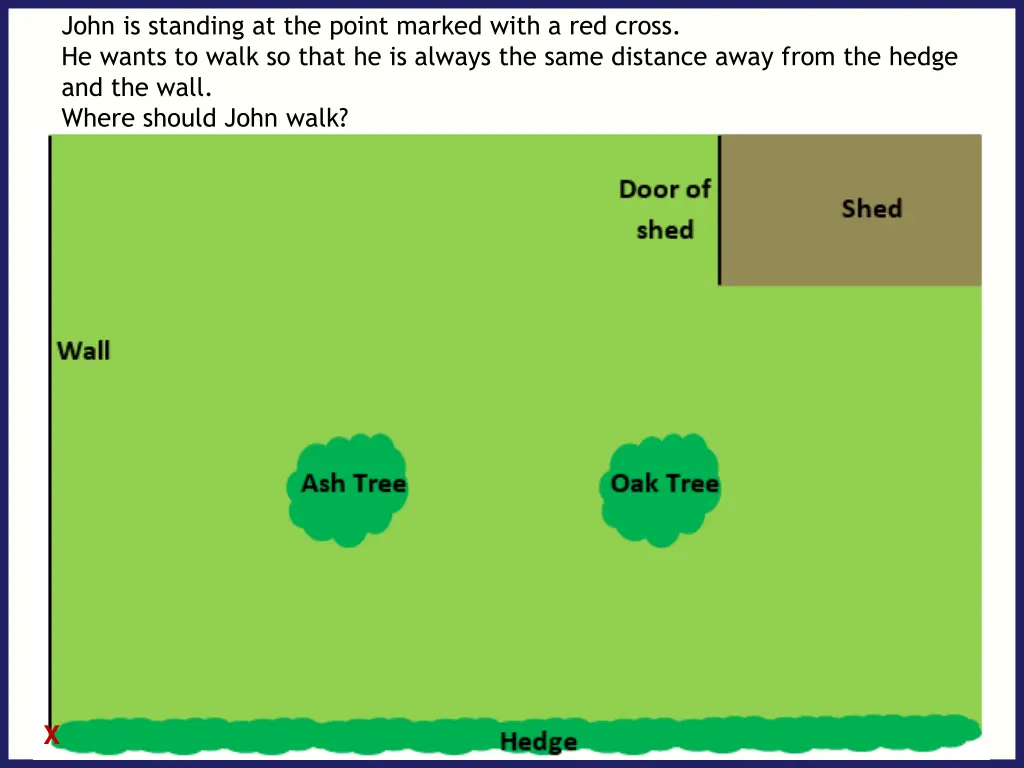
Optimal Path Finding
"Discover the ideal paths in geometry and aviation, from walking equidistant between a hedge and a wall to constructing angle bisectors. Explore methodical approaches to ensure precision and accuracy in navigation."
Download Presentation

Please find below an Image/Link to download the presentation.
The content on the website is provided AS IS for your information and personal use only. It may not be sold, licensed, or shared on other websites without obtaining consent from the author. If you encounter any issues during the download, it is possible that the publisher has removed the file from their server.
You are allowed to download the files provided on this website for personal or commercial use, subject to the condition that they are used lawfully. All files are the property of their respective owners.
The content on the website is provided AS IS for your information and personal use only. It may not be sold, licensed, or shared on other websites without obtaining consent from the author.
E N D
Presentation Transcript
John is standing at the point marked with a red cross. He wants to walk so that he is always the same distance away from the hedge and the wall. Where should John walk? X
John is standing at the point marked with a red cross. He wants to walk so that he is always the same distance away from the hedge and the wall. How do you know he is exactly half way between the wall and the hedge? X
John is standing at the point marked with a cross. He wants to walk so that he is always the same distance away from the hedge and the wall. What would be the same if the path had been drawn perfectly? X
The ideal flight path for the plane to land is midway between the maximum and minimum angle of descent. What path should the plane take?
To draw the path accurately we can use a construction known as an angle bisector. What do you think the word bisector means? bisect: to split into two equal parts
When constructing an angle bisector every point on the path drawn is equidistant from one side as it is from the other. The angle has been perfectly cut in half.
Anchor compasses at the vertex of the angle (point Q) Draw a circle with radius less than QP and QR Label the points where the circle intersects QP and QR A and B respectively Do not alter the width of the compasses 7
Anchor compasses at point A Draw a circle with centre A Do not alter the width of the compasses 8
Anchor compasses at point B Draw a circle with centre B 9
Draw a line from Q to where the two circles with centres A and B intersect. Line QC bisects angle PQR 10
Why is QA is congruent to QB? Why does the line QC bisects the angle PQR? Reason: They were both drawn with the same compass width. Reason: AQC and BQC are adjacent and congruent. Why are angles AQC and BQC are congruent? Reason: Corresponding parts of congruent triangles are congruent. 11
Bisecting Angles Bisect an obtuse angle ABC
Anchor compasses at the vertex of the angle (point B) Draw a circle with radius less than BA and BC Label the points where the circle intersects BA and BC D and E respectively Do not alter the width of the compasses 13
Anchor compasses at point E Draw a circle with centre E Do not alter the width of the compasses 14
Anchor compasses at point D Draw a circle with centre D 15
Draw a line from B to where the two circles with centres D and E intersect. Line BG bisects angle ABC 16
In your books.. Q1. Sketch these angles and bisect them with compasses and a ruler
In your books Q2. Sketch these polygons and bisect angle ABC
In your books Q3. Using a protractor, draw an angle of 64 . Using a compass and ruler only, construct its angle bisector. Check your answer by measuring the two angles formed. Q4. Using a protractor, draw an angle of 120 . Using a compass and ruler only, construct its angle bisector. Check your answer by measuring the two angles formed. Q5. Draw a triangle and construct the angle bisector of each vertex. Draw the largest possible circle that does not exit the triangle.
Q5. Draw a triangle and construct the angle bisector of each corner You should find that the bisectors intersect at a single point inside the triangle! Now using the point of intersection as centre, draw the largest possible circle that does not leave the triangle You should find that the circle touches all three sides of the triangle This works with anytriangle Can you explain why this happens?!
Challenge Problem: Bisect all 4 angles using the fewest arcs and lines. (Record: 4 arcs, 2 lines)


